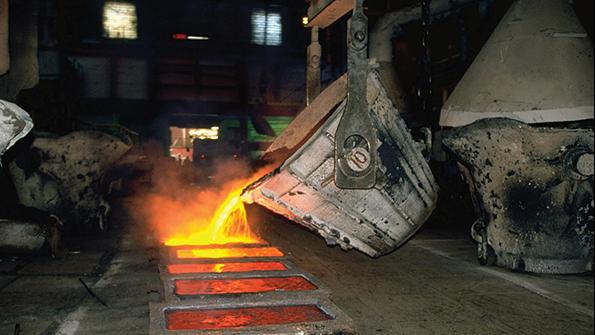
Russia’s invasion of Ukraine has created a myriad of issues for aviation and aerospace. Front and center is the West’s dependence on Russian supplier VSMPO-Avisma, the largest titanium producer in the world. With Russian imports effectively banned, how vulnerable is the aerospace supply chain?
Assessing vulnerability requires unpacking titanium’s own complex supply chain. The metal is produced primarily from titanium sponge—an intermediate material created by combining ore, chlorine and magnesium in several energy-intensive processes. Sponge and scrap titanium are then combined to make titanium ingots, which in turn are used to create downstream products.
Titanium is a miracle material. It has the highest strength-to-weight ratio of any metal, excellent corrosion resistance and a high melting temperature, and it is highly compatible with carbon-fiber composite structures. For these reasons it features prominently in a variety of applications, from fighters to Boeing 787 and Airbus A350 aerostructures and landing systems to the cold section of aero-engines. Before the COVID-19 pandemic, aerospace consumed some 220 million lb. of titanium per year.
Titanium sponge is the first potential vulnerability. The last domestic U.S. sponge facility in Henderson, Nevada, closed in 2020, and a U.S. government review concluded that while sponge is a strategic material, it did not deserve financial support under a Trade Expansion Act Section 232 tariff. Global sponge production is led by China (51%), Japan (17%) and Russia (13%), followed by Kazakhstan and Ukraine. U.S. titanium producers obtain the lion’s share of their sponge from Japanese suppliers—principally Toho Titanium and Osaka Titanium Technologies. Can those suppliers step up to meet additional demand if Russian and Ukrainian supplies go offline and China isn’t a real option?
A knock-on effect of the sponge supply situation is that the price of scrap titanium, also known as “revert,” has doubled since June 2021 to $3 per pound.
Moving to mill product, four suppliers comprise 75-80% of aerospace supply: VSMPO-Avisma, Allegheny Technologies Inc. (ATI), TIMET and Howmet. VSMPO is by far the largest and is the major supplier to Boeing (35%), Airbus (more than 50%) and Embraer (nearly 100%). Replacing VSMPO’s capacity will be a challenge. The key issue here will not be certification of new suppliers but finding labor for the cast houses and mills in an incredibly tight labor market. The good news here is that the slowdown in twin-aisle production rates created an inventory buffer with aircraft OEMs and some major suppliers. Boeing, for example, has more than a year’s supply of titanium inventory.
The story in the aeroengine supply chain is very different: TIMET and ATI are the largest suppliers, producing the highest-quality titanium (rotating grade) used for aeroengine disks, blades and vanes. GE and Pratt & Whitney have avoided sourcing from VSMPO and have minimal dependence today. But Safran and Rolls-Royce source an estimated 20% or more of their titanium from VSMPO.
In contrast to aircraft manufacturing, inventory in the aeroengine supply chain is tight, with 2-3 months of titanium supply on hand. Moreover, aeroengine production is ramping up while maintenance, repair and overhaul demand is growing by double digits. Potential bottlenecks abound, as evidenced by Pratt’s recent announcement that it missed 70 engine deliveries due to casting supplier issues. Rolls-Royce and Safran will need to move smartly to minimize the damage from this new bottleneck.
The situation in landing gear also deserves scrutiny. Many of the key components in the 787 and Boeing 777 landing gears are produced in a Russia-based 50,000-lb. forging press, machined by a Boeing-VSMPO joint venture. Replacing this will not be easy. There are few presses of this size in the world, and certification of a new facility could take 18-24 months. Boeing’s buffer of 100+ built but not delivered 787s and reduced twin-aisle production rates will help to ameliorate the situation, but the airframer must act fast to reboot its landing gear supply chain. Airbus may face a similar situation with its titanium A350 landing gear.
The Russia titanium saga is the latest for a battered aerospace supply chain that has endured the Boeing 737 MAX grounding and the COVID crisis in recent years. However, there are two silver linings this time. First, governments and OEMs might finally be forced to adopt policies recognizing the strategic nature of aerospace’s “miracle material.” Airbus, Safran and Tikehau Ace Capital recently signed an agreement to acquire European specialty material supplier Aubert & Duval, which has titanium capability. Perhaps the U.S. will revisit the need to support domestic titanium sponge capacity. The second silver lining is timing, with twin-aisle production rates stuck in neutral and excess inventory abundant.
Kevin Michaels is managing director of AeroDynamic Advisory in Ann Arbor, Michigan.





